Recent Water Damage Posts
Karl Spinner Shares Tips with CBS NY on Home Preparation for Severe Weather
4/29/2024 (Permalink)
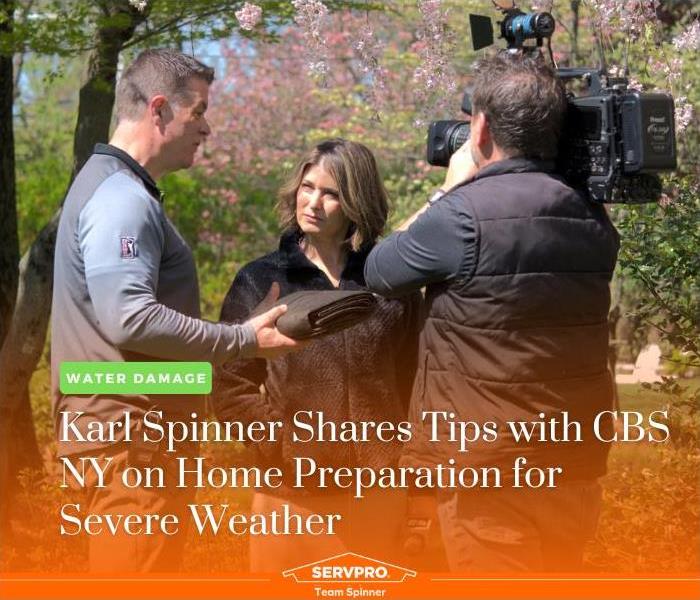 Getting information out on multiple platforms is always beneficial for the community.
Getting information out on multiple platforms is always beneficial for the community.
Recently, SERVPRO Team Spinner had the privilege of collaborating with CBS New York for an insightful interview featuring our very own owner, Karl Spinner. The filming took place last week in honor of Severe Weather Awareness Week. During the interview, Karl shared valuable tips and advice on how homeowners can prepare their properties for severe weather events.
As a trusted expert in disaster restoration and mitigation, Karl's insights offer valuable guidance for protecting homes and families in the face of adversity.
Severe weather events, such as hurricanes, storms, and floods, can pose significant threats to homes and properties. By taking proactive measures to prepare for these events, homeowners can minimize the risk of damage and ensure the safety of their families. Karl highlighted the critical steps that homeowners can take to safeguard their homes and mitigate potential risks.
Karl shared that it is important to have a house where water can go away from the home. From having clean gutters to ensuring they divert the water away from the home, property owners can expect to reduce flood risks.
He also suggests to invest in a liquid dam and a sump pump, while giving tips on how to use each item when you have them.
As a reference before using a sump pump, owners must make sure there is no debris for easy water removal. In addition, make sure that your sewer clean out is secure.
If you haven't seen it yet, we've added the segment below, but you can also watch it on CBS New York's official YouTube channel at: https://youtu.be/m59FmlUgjV4?si=UAre0nNr6K6-l4sD
This week in New Jersey, we have luckily been receiving great weather.
However, severe weather can come as a surprise.
If you ever find yourself facing water damage in your home or business, do not hesitate to contact us at 908-650-8611 or email us at gtipton@SERVPROwessex.com.
Our expert team specializes in water damage, cleanup, and restoration. SERVPRO Team Spinner can restore your property to its preloss condition in no time.
We are The #1 Choice in Cleanup and Restoration.
We're Here to Help ® 24/7.
Safeguarding Your Home: Tips to Prevent or Minimize Water-Related Losses
1/29/2024 (Permalink)
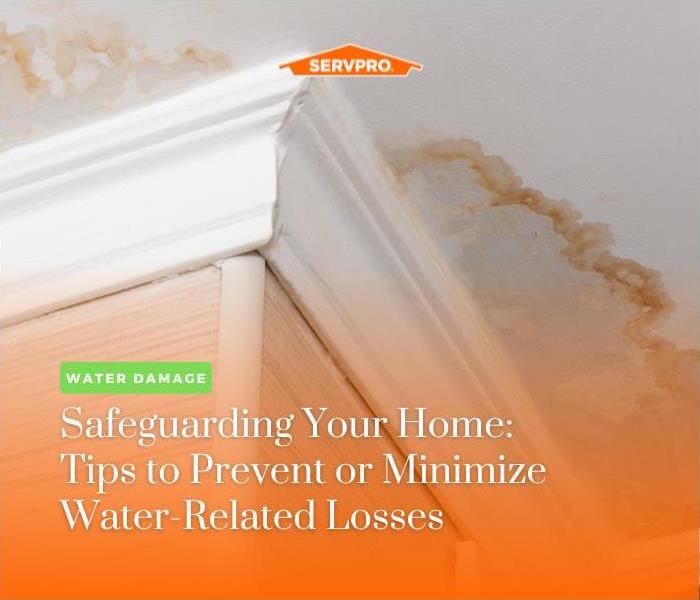 It doesn't have to rain for days for your home to have water damage
It doesn't have to rain for days for your home to have water damage
Water-related losses can have a significant impact on your home, but with proactive measures, you can prevent or minimize potential damages. At SERVPRO® Team Spinner, we're committed to helping you safeguard your property. In this guide, we'll share practical tips to protect your home from water-related losses.
1. Regular Inspections:
Stay vigilant with routine inspections of your home's plumbing, roof, and foundation. Identify and address any issues promptly to prevent potential water leaks or damage.
2. Proper Maintenance of Appliances:
Regularly inspect and maintain household appliances like washing machines, dishwashers, and water heaters. Address any leaks, worn hoses, or malfunctions to prevent water damage.
3. Adequate Ventilation:
Ensure proper ventilation in areas prone to moisture, such as bathrooms, kitchens, and basements. Good airflow helps reduce humidity levels, minimizing the risk of mold and water damage.
4. Roof Maintenance:
Regularly inspect your roof for damaged shingles, flashing, or any potential leaks. Promptly address any issues to prevent water infiltration during heavy rainfall or storms.
5. Proper Grading and Drainage:
Maintain proper grading around your home to direct water away from the foundation. Clean and clear gutters and downspouts regularly to ensure efficient water drainage.
6. Foundation Sealing:
Seal any cracks or gaps in your home's foundation to prevent water from entering. Proper sealing helps protect against basement leaks and potential structural damage.
7. Smart Landscaping:
Position plants and landscaping features to encourage proper water runoff. Avoid planting too close to the foundation, as this can contribute to excess moisture and water-related issues.
8. Monitoring Humidity Levels:
Use dehumidifiers in damp areas to control indoor humidity levels. Keeping the air dry helps prevent mold growth and reduces the risk of water damage.
9. Emergency Preparedness:
Have an emergency plan in place for water-related incidents. Know the location of shut-off valves, keep emergency contacts handy, and be prepared to act swiftly in case of a water emergency.
By implementing these preventative measures, you can significantly reduce the risk of water-related losses to your home. At SERVPRO Team Spinner, we understand the importance of proactive protection. If you do encounter water damage, our experts are here to assist in restoring your home to its pre-damage condition. Let's work together to keep your home safe and secure.
The Silent Threat: Understanding How Snow Can Damage Your Home
1/17/2024 (Permalink)
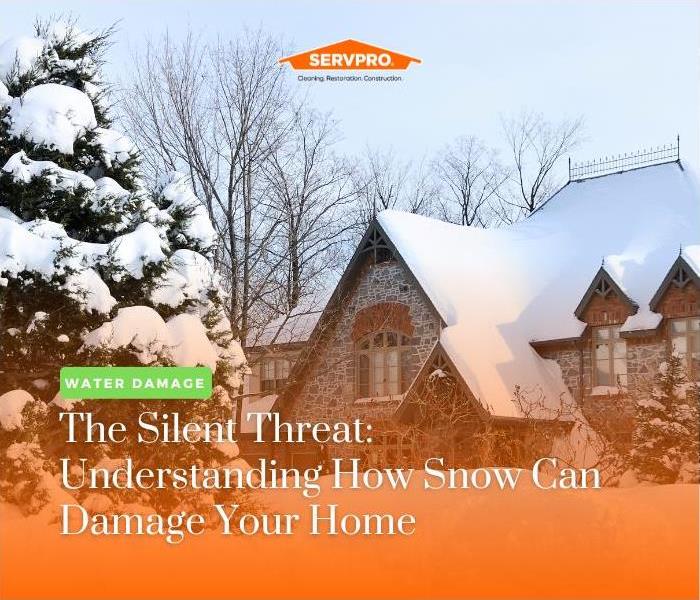 Who knew something beautiful also could be dangerous?
Who knew something beautiful also could be dangerous?
While snow-covered landscapes can be picturesque, the accumulation of snow on and around your home can pose significant risks. At SERVPRO® Team Spinner, we understand the potential damage that snow can inflict, and in this guide, we'll explore the various ways snow can compromise the integrity of your home and the importance of proactive measures to mitigate these risks.
Roof Overload:
Weight Stress: Accumulated snow can exert immense weight on your roof. This stress, especially when combined with ice and freezing rain, can lead to structural damage and even roof collapse.
Ice Dams: The melting and refreezing of snow on the roof can form ice dams. These dams prevent proper drainage, leading to water infiltration under shingles and potentially causing interior damage.
Water Damage:
Foundation Infiltration: Melting snow can seep into the soil around your foundation. As it refreezes, it expands, creating pressure that can crack the foundation and compromise its integrity.
Basement Flooding: Excessive snowmelt can overwhelm drainage systems, leading to basement flooding. This can result in extensive damage to belongings and the structural elements of your home.
Exterior Hazards:
Siding and Paint Damage: Prolonged exposure to moisture from melting snow can damage siding and paint, reducing their protective capabilities and aesthetic appeal.
Gutters and Downspouts: Snow and ice accumulation can lead to clogged gutters and downspouts, causing water to overflow and potentially damage the roof, siding, and foundation.
Preventive Measures:
Roof Inspection: Conduct regular roof inspections, especially after heavy snowfall, to identify any signs of stress or potential damage.
Proper Insulation: Ensure your attic is well-insulated to prevent heat loss, which can contribute to snowmelt and the formation of ice dams.
Gutter Maintenance: Keep gutters and downspouts clear of snow and ice to facilitate proper drainage.
Foundation Sealing: Seal any cracks in the foundation to prevent water infiltration during the melting and freezing cycles.
Landscaping Considerations: Proper landscaping can help direct water away from the foundation. Ensure the grading around your home promotes water runoff.
Snow, though beautiful, can pose a silent threat to your home's structural integrity. Vigilance, timely inspections, and preventive measures are crucial to protecting your property from potential damage. At SERVPRO Team Spinner, we're committed to helping you safeguard your home. If you find yourself facing snow-related challenges, our experts are here to assist. Let's ensure your home remains a safe and secure haven throughout the winter months.
Winter Storm Preparedness: A SERVPRO® Team Spinner Guide to Weathering the Snow
1/5/2024 (Permalink)
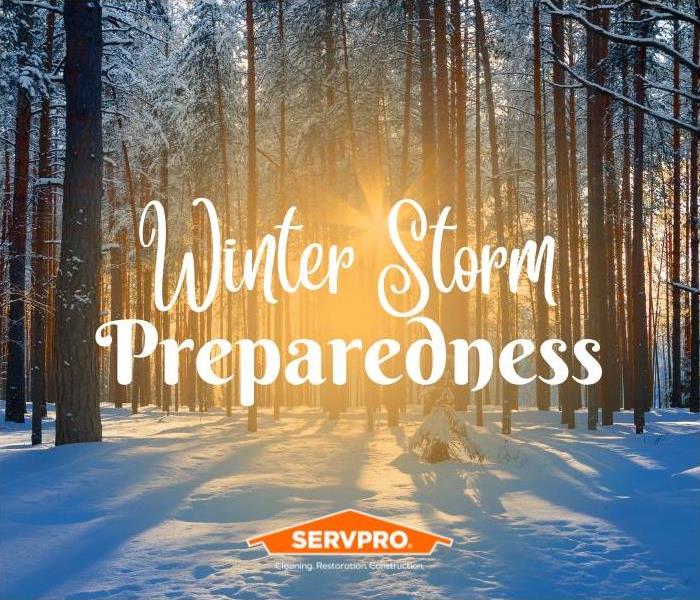 Stay warm, stay safe, and let's make this winter a season of comfort and security
Stay warm, stay safe, and let's make this winter a season of comfort and security
As winter descends upon us, it brings with it the potential for snowstorms that can impact daily life. At SERVPRO Team Spinner, we prioritize your safety and well-being. In this guide, we'll walk you through essential steps to prepare for an upcoming snowstorm, ensuring that you and your property are ready to face the challenges that winter weather may bring.
Winter Storm Preparation:
Stay Informed: Regularly check weather forecasts and updates. Stay informed about the severity and duration of the upcoming storm to make informed decisions.
Emergency Kit: Prepare an emergency kit that includes essential supplies such as non-perishable food, water, medications, flashlights, batteries, blankets, and a first aid kit.
Heating System Inspection: Schedule a professional inspection of your heating system to ensure it's operating efficiently. Replace filters and address any issues promptly.
Pipe Insulation: Insulate exposed pipes to prevent them from freezing and bursting. Use pipe insulation or heat tape for added protection.
Propane and Gas Appliances: Ensure that propane and gas appliances are in good working condition. Have an ample supply of fuel if you rely on these systems for heating.
Home Protection During a Winter Storm:
Roof Inspection: Regularly inspect your roof for signs of stress or damage. Heavy snow accumulation can lead to roof collapse, especially if there are existing issues.
Snow Removal: Safely remove snow from walkways, driveways, and the roof. Use a snow blower or shovel to prevent ice buildup and ensure safe passage.
Gutter Maintenance: Keep gutters and downspouts clear of snow and ice to prevent water backups that can lead to roof and foundation damage.
Window and Door Seals: Check and reinforce seals around windows and doors. This helps prevent drafts and keeps your home well-insulated.
Emergency Power: Consider having a backup power source, such as a generator, in case of power outages. Ensure it's in good working condition and that you have an ample supply of fuel.
Emergency Exits: Keep emergency exits clear of snow and debris. In case of an evacuation, you want unobstructed pathways.
Communication Plan: Establish a communication plan with family members, neighbors, and emergency contacts. Ensure everyone knows where to meet or how to reach each other in case of separation.
Water Damage:
Foundation Infiltration: Melting snow can seep into the soil around your foundation. As it refreezes, it expands, creating pressure that can crack the foundation and compromise its integrity.
Basement Flooding: Excessive snowmelt can overwhelm drainage systems, leading to basement flooding. This can result in extensive damage to belongings and the structural elements of your home.
After the Storm:
Inspection and Repairs: After the storm, inspect your home for any damage. Address issues promptly to prevent further deterioration.
Insurance Review: Review your home's insurance policy to ensure it covers winter-related damage. Report any damages promptly to your insurance provider.
Professional Assistance: If you encounter significant damage, seek professional assistance. Companies like SERVPRO Team Spinner specialize in storm damage restoration and can help restore your home to its pre-storm condition.
Winter storms demand careful preparation and vigilant protection measures. By following these tips from SERVPRO Team Spinner, you can fortify your home against the challenges of winter weather.
Defending Your Home: Identifying and Dealing with Ice Dams
12/28/2023 (Permalink)
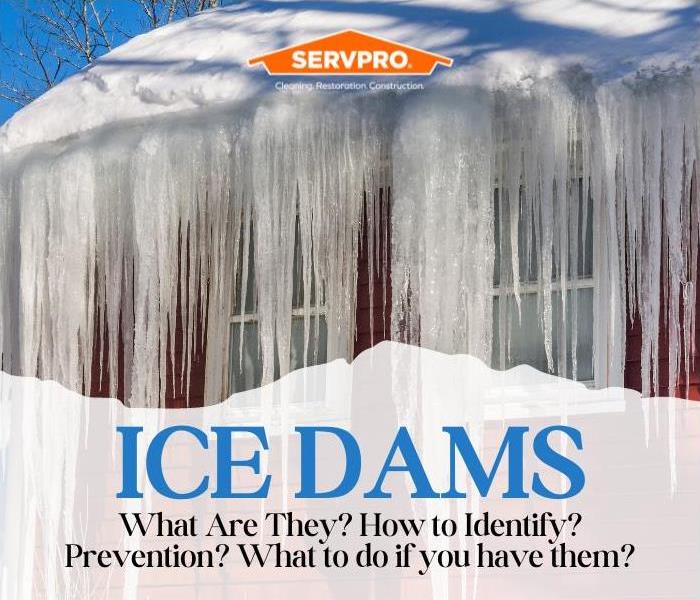 Let SERVPRO Team Spinner help you deal with your ice dams
Let SERVPRO Team Spinner help you deal with your ice dams
Winter brings a picturesque blanket of snow, but it also brings the potential for ice dams—a homeowner's wintertime nemesis. As the temperatures drop, these icy formations can wreak havoc on your roof, leading to water damage and potential structural issues. At SERVPRO® Team Spinner, we understand the importance of proactive measures to safeguard your home. In this blog, we'll delve into the identification and effective management of ice dams.
What are Ice Dams?
Ice dams are ridges of ice that form at the edge of your roof, preventing melting snow from draining properly. The combination of snow accumulation and fluctuating temperatures causes the melted water to refreeze at the roof's edge, creating a dam-like structure. As this process repeats, the dam grows, causing water to pool behind it and potentially infiltrate your home.
Identifying the Signs:
Icicles: While icicles may seem charming, they can signal potential ice dam issues. Large icicles hanging from the roof edge are indicative of melting and refreezing.
Water Stains on Walls and Ceilings: Water stains on interior walls or ceilings may suggest that melting snow is finding its way into your home. This is a clear sign that an ice dam is impeding proper drainage.
Ice Buildup in Gutters: Observe your gutters for the presence of ice. If you notice substantial ice buildup, it can contribute to the formation of dams on the roof.
Preventing Ice Dams:
Proper Insulation: Ensure your attic is well-insulated to prevent warm air from escaping and melting snow on the roof.
Ventilation: Maintain proper attic ventilation to keep the roof temperature uniform, discouraging ice dam formation.
Snow Removal: Safely remove excess snow from your roof using a roof rake. This helps eliminate the material that contributes to ice dam formation.
Dealing with Existing Ice Dams:
Professional Removal: Engage professionals, like SERVPRO Team Spinner, for safe and effective removal of existing ice dams to prevent further damage.
Avoid Chipping: Refrain from chipping away at ice dams using tools, as this can cause additional harm to your roof.
Identifying and dealing with ice dams requires a combination of preventive measures and timely action. At SERVPRO Team Spinner, we're committed to helping you protect your home. If you find yourself facing the challenges posed by ice dams, don't hesitate to reach out for professional assistance. Let's ensure your home stays warm, dry, and resilient throughout the winter months.
What to Do When Water Damage Strikes
12/19/2023 (Permalink)
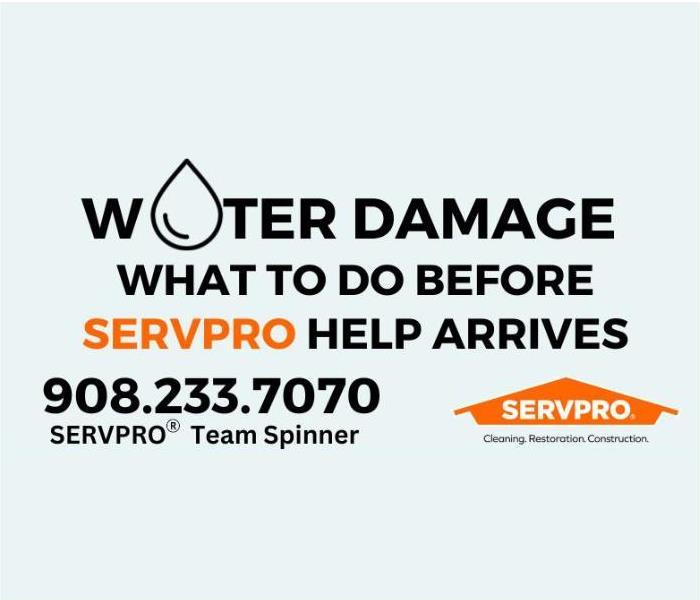 Call us at 908-233-7070 for all your water damage needs
Call us at 908-233-7070 for all your water damage needs
With the heavy rain that happened over the weekend, some homes and buildings were struck with floods.
Water damage can strike unexpectedly, turning your home or office into a stressful situation. But fear not – at SERVPRO® Team Spinner, we're here to guide you on the immediate steps to take when facing water damage. Quick and informed action can make a significant difference in minimizing the impact. Read on for our expert advice on what to do if you find yourself dealing with water damage in your house or workspace.
Safety First: Your safety is the top priority. If there's standing water and you can do so safely, turn off the electricity and gas supply to the affected area. Avoid entering rooms with sagging ceilings or wet electrical outlets.
Identify and Stop the Source: Determine the source of the water and take steps to stop it, if possible. Whether it's a burst pipe, a leaking roof, or a malfunctioning appliance, addressing the root cause is crucial to preventing further damage.
Document the Damage: Before beginning any cleanup, document the extent of the water damage. Take photos and videos of the affected areas. This documentation will be valuable when filing insurance claims.
Remove Standing Water: Use a wet/dry vacuum, mop, or towels to remove as much standing water as possible. The sooner you extract water, the less time it has to seep into structures and belongings.
Ventilate and Dehumidify: Increase ventilation in the affected area by opening windows and doors. Use dehumidifiers to reduce humidity levels, helping to prevent mold growth.
Separate and Salvage: Move belongings to a dry area to prevent further damage. Items like furniture and rugs can often be salvaged if treated promptly. Remove any wet cushions and prop them up to dry.
Contact SERVPRO Team Spinner for Professional Assistance: As water damage restoration experts, SERVPRO Team Spinner is here to help. Our professionals are equipped with the knowledge and tools to assess the damage, mitigate further issues, and restore your home to its preloss condition.
File an Insurance Claim: Contact your insurance provider as soon as possible to report the water damage. Provide them with the documentation you gathered, including photos and a list of damaged items.
Prevent Mold Growth: Mold can start growing within 24-48 hours of water damage. Promptly address damp areas and use antimicrobial cleaning agents to discourage mold growth.
Stay Informed and Prepared: Educate yourself about potential water damage risks in your home. Regularly inspect appliances, plumbing, and the roof to catch potential issues before they escalate.
Facing water damage can be overwhelming, but with swift and informed action, you can minimize the impact on your home. Remember, SERVPRO Team Spinner is just a call away, ready to assist you with professional water damage restoration services. Don't let water damage dampen your spirits – take control, and let us help you get back to a dry, comfortable environment.
Guardians of the Pipes: Protecting School Plumbing Systems During the Holidays
11/28/2023 (Permalink)
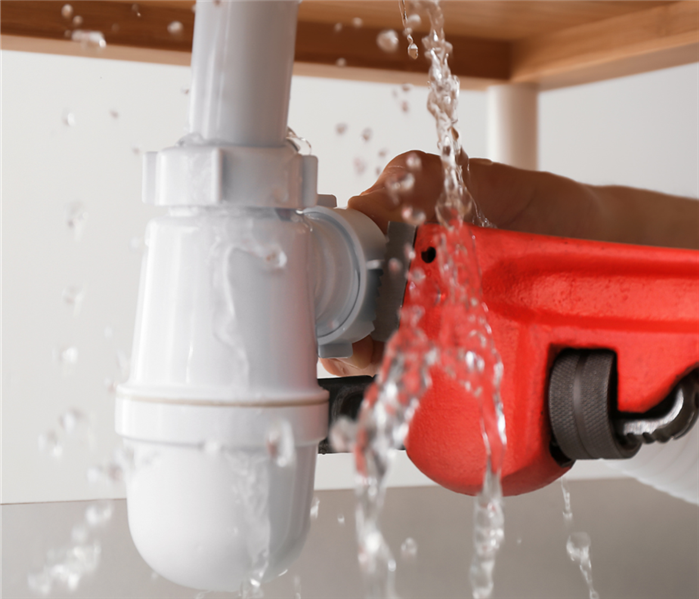 Don't start the new year with a flooded school!
Don't start the new year with a flooded school!
As schools prepare to close their doors for the holiday season, it's crucial to turn attention to one of the often overlooked aspects of facility management – the plumbing system. A dormant school building can pose challenges for plumbing if not properly prepared. SERVPRO Team Spinner, with its expertise in restoration and cleanup, offers valuable insights on how to safeguard school plumbing systems during the holidays.
1. Conduct a Thorough Inspection: Before the school doors are locked for the holidays, conduct a comprehensive inspection of the plumbing system. Look for leaks, drips, or any signs of wear and tear. Addressing issues preemptively can prevent small problems from turning into major disruptions.
2. Ensure Proper Insulation: As temperatures drop, it's essential to ensure that exposed pipes are adequately insulated. This safeguards against freezing, which can lead to pipe bursts and water damage. Pay special attention to areas that might not receive sufficient heating, such as basements and attics.
3. Run a Full Flush: Encourage the maintenance staff to perform a full flush of all toilets and run water through all faucets. This helps prevent sediment build-up, ensures water circulation, and keeps the traps filled to prevent sewer gases from entering the building.
4. Set Thermostats Appropriately: Maintain a minimal level of heating in the building to prevent freezing. While it might be tempting to save on energy costs, allowing the temperature to drop significantly can result in frozen pipes and subsequent water damage.
5. Shut Off Unnecessary Water Sources: Identify and shut off water sources that aren't essential during the holidays. This includes irrigation systems, outdoor faucets, and any other non-essential water supply. By reducing the overall pressure on the plumbing system, the risk of leaks or bursts is minimized.
6. Establish Emergency Protocols: In the event of an unexpected plumbing issue, having clear emergency protocols in place is crucial. Ensure that staff members know how to locate shut-off valves and are aware of the steps to take in case of a water-related emergency.
7. Partner with Professionals: Consider consulting with plumbing professionals or restoration experts like SERVPRO Team Spinner. Their experience in dealing with water damage can provide valuable guidance and proactive solutions to fortify the plumbing system against potential risks.
Protecting a school's plumbing system during the holidays requires a combination of proactive measures, thorough inspections, and a keen awareness of potential vulnerabilities. By implementing these steps, schools can ensure that they return to a fully operational and undamaged plumbing system when the doors reopen. SERVPRO Team Spinner stands ready to assist with any unforeseen water-related challenges, emphasizing the importance of a collaborative effort to keep school facilities safe and secure during the holiday break.
After all, we aim to make it "Like it never even happened."
Getting to Know the 3 Types of Water Classifications
10/3/2022 (Permalink)
If you think all water that causes water damage is the same, think again! There are three classifications for it: clean, gray and black.
By gaining a better understanding of the differences in these types of water, it will help you understand how to better handle a water damage situation.
Whenever there is a water damage situation, it doesn’t matter what type of water has caused damage because a cleanup and restoration process will always follow. First, and most important, is removing all moisture and damp items as quickly as possible to hinder the growth of mold, which begins to flourish in this ideal environment.
Clean Water
The name says it all; clean water is considered “clean” and not likely to be the type that would pose an immediate threat to your health. This water contains no contaminants and is the result of:
- Broken water lines
- Malfunctioning appliances
- Toilet holding tanks
- Snow melt and rainwater
Clean water is the easiest type of water damage to work with because there are fewer microbes living in the water. But remember, it only takes 48 hours and contact with the surfaces of a building for clean water to become a category two, becoming gray water.
Gray Water
Damage from gray water makes water damage cleanup and restoration a bit more serious. This is water that may pose a health risk because it will most likely contain chemical or biological contamination. This slight contamination means that gray water would need to be thoroughly treated before it is safe for consumption.
Water that comes from dishwashers, aquariums, showers, etc. is considered gray water, and the 48-hour exposure time applies here as well, as it will become black water if it is not quickly and property treated.
Black Water
A black water damage situation is considered the most serious of the three classifications as this water is highly contaminated by harmful chemicals and biological matter. This would include floodwaters containing soil and all sewage waters.
Sewage is contaminated with microbes, which include bacteria, protozoans, molds, fungi and more—many of these can cause health effects to humans.
Some of the diseases that can be transmitted by black water are:
- Cholera
- Typhoid
- Hepatitis
- Gastroenteritis-type illnesses
Any water involved in a flooding situation should be considered dangerous and assumed to be black water since it will pick up contaminants along its path.
The Institute of Inspection, Cleaning and Remediation Certification (IICRC), an organization that certifies and sets the standards for the cleaning and restoration industry, recognizes these three classifications of floodwater. Our highly trained technicians have all studied IICRC’s standards and best practices in water restoration and are available to help determine the steps to take to get your home back to normal.
It doesn’t matter what type of water has caused damage to your home or business, we are here to help get the situation under control and make it "Like it never even happened." Don’t hesitate to reach out to us if you need emergency cleanup and restoration services!
Ways to Prevent Mold Growth after Water Damage
7/18/2022 (Permalink)
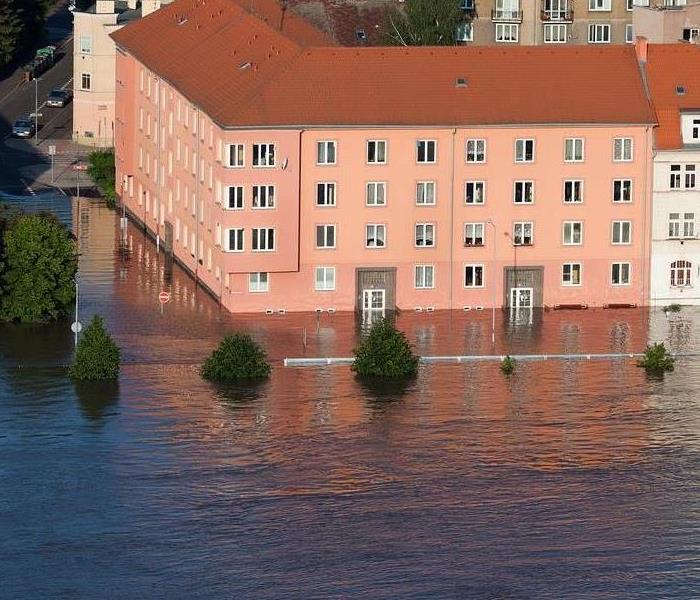 After a flood, mold can grow. Call us to help if you notice mold growth.
After a flood, mold can grow. Call us to help if you notice mold growth.
Water damage is difficult for home and business owners—not only because of the structural damage it can cause but also because of the unique health hazards and risks it can present.
One of the most dangerous of these risks is mold growth.
Here are the steps you can take to stop mold from taking hold if your home has been affected by water damage:
Before You Get Started
- Do not attempt to re-enter your building until officials have deemed it safe and are positive all water has receded.
- Take photos and videos of damage throughout—making sure to include damage done to furniture and walls—for insurance claim purposes.
Drying Should Begin Right Away
- Set up as many fans, dehumidifiers and heaters as possible to speed up drying time.
- Begin vacuuming with a heavy-duty, outdoor vacuum before the cleanup crew arrives.
- Weather permitting, open windows and doors to maximize airflow for as long as possible.
Items Exposed to Water Should Be Sorted
- Metal, plastic glass and other non-porous materials can often be cleaned, disinfected and reused.
- Porous materials exposed to water damage, such as wood, upholstery and paper of any kind, can trap mold and should be discarded.
- It is important to note that drying carpet will not necessarily remove mold spores if they’ve already begun to grow.
A Professional Should Always Be Consulted
In some cases, carpets can be salvaged after water damage. However, most experts will recommend replacing the carpet pad at a minimum.
Mold is incorrectly associated with discolorations and foul odors when the reality is that mold can often lurk unnoticed long before it is visible. Replacing the carpet pad is significantly less costly than a full re-carpeting of the home, but only a professional can determine if this is adequate enough to prevent mold from spreading.
Understanding Water Types
7/18/2022 (Permalink)
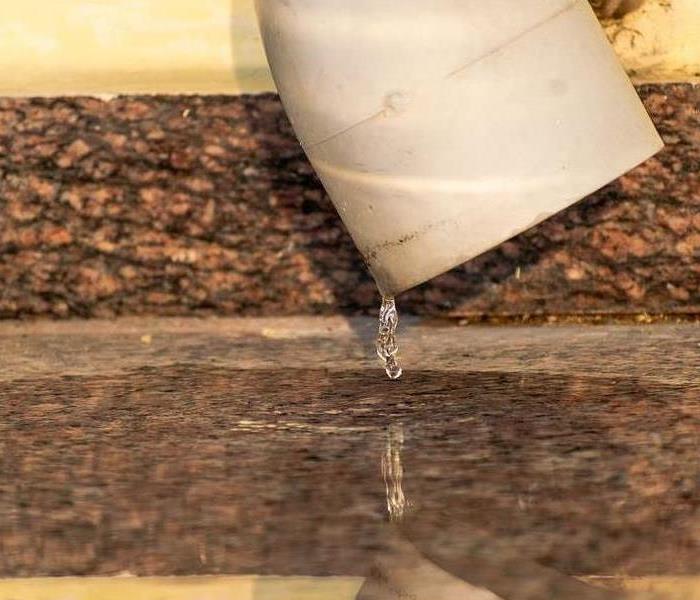 Different types of water require different types of cleanup. Call us to help.
Different types of water require different types of cleanup. Call us to help.
SERVPRO of Hamilton & South Trenton are here to help you understand what type of water you are dealing with to ensure proper cleanup when your home or business suffers a water damage.
We classify these waters in three ways. Clean water is water from a broken pipe, or other water source (such as rain). The term gray water is slightly contaminated water. Clean water becomes gray water when it is left untreated allowing bacteria and other contaminants to begin growing. Black water is highly contaminated and filled with fungi, bacteria, chemicals and more. Black water is typically caused by sewage damage, flooding or any type of natural disaster. Black water should only be handled by trained professionals. Consider taking the following precautions to help minimize damage or prevent further damage while waiting for help to arrive.
Damage from Clean Water
- We advise our customer to not enter any rooms with standing water. Electrical hazards may exist and should be avoided. Turn off your circuit breakers for wet areas of the building if access to the power distribution panel is safe from potential electrical shock.
- Shut off water source if possible.
- Remove as much excess water as possible by mopping and blotting. Wipe excess water from wood furniture after removing lamps and tabletop items.
- Remove and prop up wet upholstery cushions to allow more even drying.
- Do not use your household vacuum cleaner to remove water as there is potential for electrical shock or causing damage to the vacuum cleaner.
- Do not turn on ceiling fixtures if ceiling is wet; do not enter rooms where ceilings are sagging from retained water.
Damage from Contaminated Water
- Avoid all contact with sewage and items contaminated by sewage.
- Do not walk through contaminated areas, as you could spread damage to unaffected areas.
- Do not turn on the HVAC system if there is a possibility of spreading contaminated air.
- Do not use household fans to dry the structure; air flow could spread contaminants.
- Discard any food and/or products for personal hygiene and cleanliness if exposed to the contaminated areas.
When you have a water damage, don’t leave your property to chance. Call your SERVPRO of Hamilton & South Trenton (609) 604-8241
Common Causes and Signs of Water Damage
7/18/2022 (Permalink)
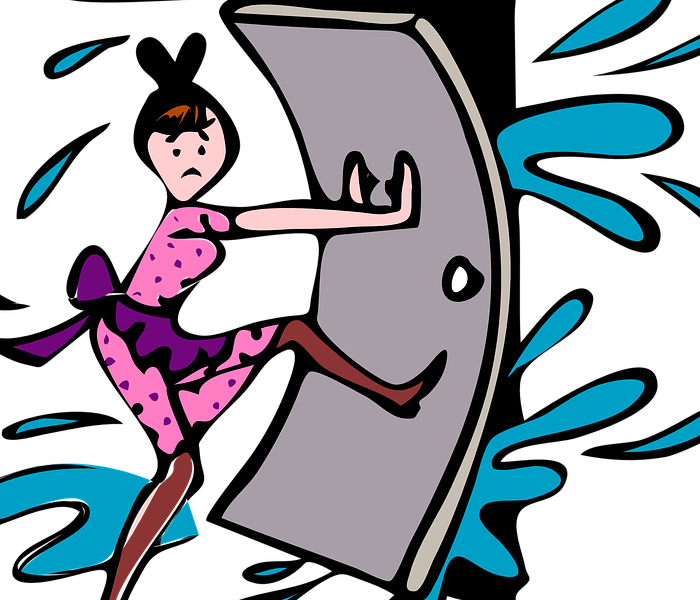 Water flooding a house.
Water flooding a house.
One of the most probable, and costly, setbacks your home can suffer is water damage. Homeowners and renters across the country lose billions of dollars because of it each year. It can occur at any time. There are a handful of situations that can cause water damage in a home:
- Problems with your HVAC system.
- Cracks in your foundation or walls.
- Severe storms, floods and other extreme weather.
- Leaky or burst pipes.
- Malfunctioning dishwashers or washing machines.
- Roof damage, such as missing shingles or cracked flashing.
- Drainage problems on your property.
Water damage is recognizable when it’s caused by a flood, but other causes are harder to spot. If you are unsure of what to look for, it can be easy to miss until it becomes a major problem. Here are the usual signs of water damage in a home:
- Paint peeling from your walls
- Mold growth (which can look like dark discoloration) on any surface
- Warping of your floors.
- A strong musty smell in a room.
- Sagging in parts of your walls or ceiling.
- Stains or discolored patches on walls or ceilings.
- Water pooling in your yard after a storm.
Source: www.budgetdumpster.com/
Home Mold Testing - DIY Kit - Use With Caution
7/1/2022 (Permalink)
You can expect mold and mildew outside your home because of the damp natural conditions of the outdoors. Mold and mildew inside the house is a different problem because the inside of your home shouldn't remain damp.
The presence of moisture is the most significant contributor to mold growth. To fight the infestation, you should conduct a room-by-room assessment of the house to identify problem areas. The moisture can come from condensation due to poor ventilation (attic), from a water leak (around bathrooms), or outdoor intrusion (foundation walls).
Detection
Mold and mildew in a home are not always easy to detect if it exists within attics or is hidden within walls. If you suspect your indoor air quality is hindered by hidden mold, the best course of action is to contact an Industrial Hygienist (IH).
The IH will take both surface and air samples to detect the presence of mold on the structure. These two tests are essential to take in concert with each other as they will help detect the presence of mold in areas that cannot be seen or reached, such as in wall cavities. They will also help determine the severity and types of mold in a specific area of the home.
If you choose to take your own surface sample as a first step, mold detection kits can be purchased in most home improvement stores and are easy to use. Swab the surface in the area you're concerned about. Test results show in as little as 5 minutes, and much like a pregnancy test, you'll either see one line (negative results) or two lines (positive).
Use caution as these tests are not necessarily conclusive, given the absence of air samples and misinterpretation by the user. Only a trained professional should perform mold testing using the proper methods.
Even if your home test is positive, it does not necessarily mean you have a serious problem but that you should consider consulting a professional indoor air quality inspector or contact SERVPRO of Hamilton & South Trenton. You can also have an optional laboratory analysis of your test results conducted for an additional fee.
Click here to go to our website and learn a bit more about Mold Remediation.
Fighting the Mold you Find
If you discover mold on the home's interior, the first step in solving the problem is to eliminate the source of moisture—whatever that may be. Otherwise, any mold or mildew you clean is likely to return.
For minor problems, you may be able to clean the surface of the materials with an antimicrobial cleaner. For major problems, remove materials that cannot be thoroughly cleaned of mold-like insulation, carpeting, or drywall. Use your antimicrobial cleaner to clean the surrounding area as well as the places where you actually see mold and mildew, so make sure you remove all traces of the substances.
Finally, replace the removed building materials with new, mold-free materials.
Mold can be a serious issue with challenging aspects in remediating it properly. We highly recommend calling in a professional, like SERVPRO, to help you evaluate the proper steps before proceeding on your own.
Contact us at (609) 256-8890 if you have a service need or click here to visit our website to learn more about SERVPRO of Hamilton & South Trenton's System Services.
Is it Mold or is it Rust?
7/1/2022 (Permalink)
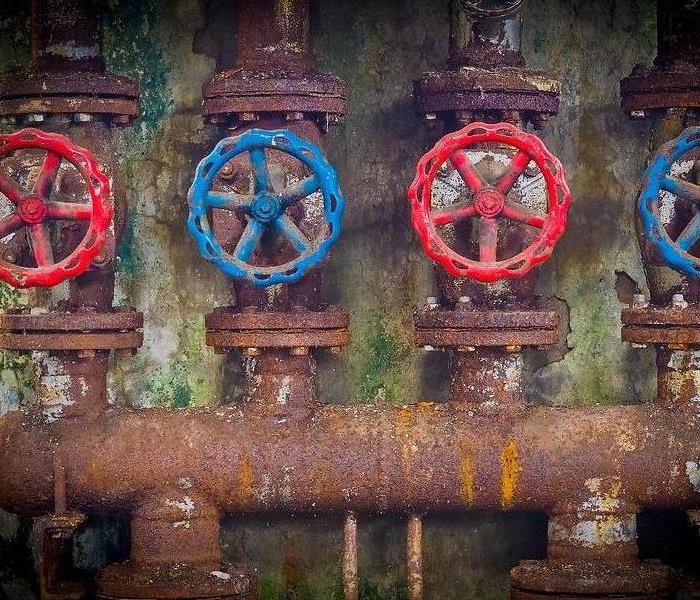 Rust on water pipes.
Rust on water pipes.
Can you easily tell the difference between mold and rust? Many people look at a reddish colored stain and assume its rust, although that’s not always the case. Before you break out your heavy-duty cleaning solutions, it pays to understand what you’re up against: mold, rust, or even another stain.
What’s Normal for Your Home?
If you’re seeing new stains on walls, floors, or countertops, you’ll want to make sure they’re not the result of water infiltration or excess humidity in your home. Try to pinpoint a reason for the stain, based on what room it’s in and the common daily activity. Mold tends to be found in damp, humid areas, while rust forms when metallic surfaces start to corrode. Recognizing the differences between mold and rust helps you determine the best way to take care of an issue before it becomes more pervasive.
What’s that Stain? Mold vs Rust
Areas prone to dampness, such as bathrooms and basements, can easily foster the growth of mold or mildew. If you see a stain that looks like mold or rust in your shower, sink area, or basement, you’ll want to clean them as quickly as possible to avoid permanent damage. However, different cleaning solutions are used to treat different stains. Rust, hard water marks, grease, and mold may all look similar, but if you use the wrong cleaner, you may not be able to fully remove them.
Identifying Rust
Rust is the result of iron, or a metal alloy containing iron, such as steel, corroding. Rust is most often observed as a red, yellow or reddish-brown surface stain. Rust is caused by water or damp air touching the surface or a metal prone to rusting. Some common areas where rust is spotted in the home, according to the International Association of Certified Home Inspectors (InterNACHI), include the following:
- Water Pipes
- Metal Roofs and Chimneys
- Oil tanks for home with oil heat
- Electrical Panel Boxes
- Nails
Preventing Rust
Rust can be prevented by keeping metals out of damp and humid areas. Protective coatings, such as varnish may also be applied to surfaces prone to rusting. Ensuring that metal fixtures in your home are kept dry can also help to prevent rust. Wipe up spills immediately and check your basement after heavy storms to spot signs of flooding as soon as possible.
Removing Rust
Removing rust can be a tough job, but with the right cleaners, you should be successful. For lighter rust stains, some household products, such as baking soda or vinegar might work. Mild abrasives like steel wool pads may also remove surface rust, but they may also leave behind scratch marks. There are also many specialized rust removal products sold that you can try for smaller stains. One product you should never use on rust is bleach, which could react negatively with the rust and actually worsen it.
If you do attempt to clean rust, always follow the instructions on any commercial cleaning product. Be sure to don safety gear, including gloves, safety glasses and a face mask. Always work in a well-ventilated area. If you’re not comfortable with the task, find a handyman or painter that is.
Mold Stains
Mold can resemble other stains like rust or mildew in appearance, but there are actually over 300 types of mold. The colors of mold can range from black to brown, white or gray, or even pink, blue or green. Mold also presents in a range of textures from downy to fuzzy. Some mold is powdery and some has a more slimy texture.
Mold can grow as the result of a single event, such as a broken pipe or indoor water infiltration due to floods or leaks. It’s important to catch the signs of indoor mold growth as early as possible and have them taken care of before they lead to greater damage. Mold sometimes can leave a stain, but that’s not always the case. A damp, musty odor can also be a sign of mold growth.
If you notice mold growth in damp areas of your home, you can clean affected surfaces with a specialized mold removal product. Common, everyday household cleaning solutions may not be effective against mold. Typically, mold cannot be totally eradicated from porous surfaces, like shower curtains, drywall, or insulation; these items should be disposed of and replaced.
When cleaning mold, you should always wear protective gear, such as a face mask, and ensure that you’re working in an adequately ventilated area. You can read more about the protective gear recommended for mold removal. SERVPRO of Hamilton & South Trenton can help you determine the best way to remove the mold. Once the mold is removed, it’s a good idea to have the area tested by a professional. If mold has continued to grow in your home, you may have a more pervasive problem that requires additional professional remediation from SERVPRO of Hamilton & South Trenton.
Evaluating Mold Issues
Because so many of the stains we see around the house look similar, it may be difficult to determine what is causing the discoloration and damage. If you notice stains on your walls, countertops, or floors that look like mold or rust, contact SERVPRO of Hamilton & South Trenton and request a free home inspection to help diagnose your problem.
Contact us at (609) 604-8241 if you have a service need or click here to visit our website to learn more about SERVPRO of Hamilton & South Trenton's System Services.
Mold and Humidity Threats in Vacation Residences
7/1/2022 (Permalink)
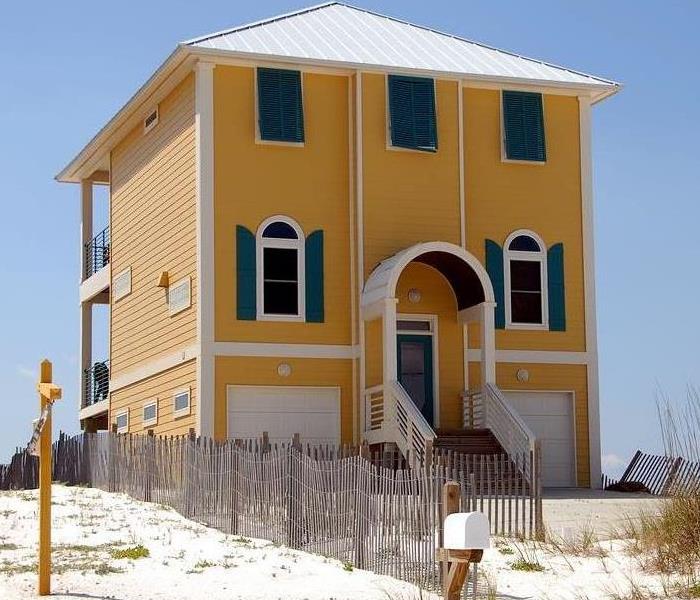 A vacation home can be affected by mold and humidity.
A vacation home can be affected by mold and humidity.
A closed-up vacation house can be a breeding ground for mold in the summer months. Moisture from a nearby lake or river, or the humidity in the air, can lead to that musty odor vacationers have come to expect upon arriving at their weekend getaway.
Mold is a particularly hidden foe. It exists nearly everywhere in an inactive state, and all it needs to grow is a food source (drywall will do nicely) and a source of moisture, such as high humidity.
To get rid of the damp odor, most homeowners will turn on the air conditioner and maybe a dehumidifier and wait for the smell to go away. While much of the odor may dissipate in a few hours, the mold is still there. And, when they leave for a week, it's back again when they return.
Left untreated, mold will continue to grow and spread and can damage walls, ceilings, carpeting, and more. Every time the house is closed up and the a/c is turned off, the moisture creeps back in, and the mold begins growing again.
MOISTURE SOLUTIONS
What can HVAC contractors do to help? First, it's important to stress that the key to preventing mold is eliminating moisture. The first step is to address any leaks in roofing, chimneys, and foundations. Perhaps you can recommend someone who can do a thorough check and perform the repairs necessary to stop the leaks. If mold remediation is needed, your customer should get bids from several companies specializing in this, as it can be costly.
Reducing humidity through air conditioning is a key to controlling mold, but, of course, leaving the a/c on all summer long will run up utility bills. Fresh outside air is also critical, but vacation homeowners won't want to leave windows open while not using the property.
Some relatively new offerings in air conditioning systems can help manage mold problems. One example is a small-duct, high-velocity air handler, which has a unique cooling coil that removes 30 percent more humidity from the air than a traditional system. Eliminating moisture is critical in avoiding mold growth, so this feature is essential.
Another helpful technology is a continuously operating outdoor inverter unit that works so efficiently that homeowners can leave it on while they're away without breaking the bank. It runs on various speeds — typically a very low speed — always striving for the most efficient operation by making small, incremental changes to keep a constant temperature. A traditional system must ramp-up to full operating power every time it cycles on, requiring a tremendous amount of energy. You won't have this issue with the inverter unit.
When cooling a summer home, the inverter technology is an excellent way for customers to keep the air conditioning going when they're gone, but at a lower cost.
Another great option is a ventilation system operated by a programmable control board. Based on the size of the home, the control board calculates how much fresh outside air to bring in at all times, opening and closing dampers as needed to maintain a healthy level of fresh air. Look for options that meet ASHRAE 62.2 standards for IAQ.
These newer technologies can go a long way toward reducing energy consumption while letting fresh air in and keeping mold problems at bay. More savings and fewer molds mean a healthier and happier vacation for everyone.
Contact us at (609) 256-8890 if you have a service need, or click here to visit our website to learn more about SERVPRO of Hamilton & South Trenton System Services.
The Deception of Water Damage
6/3/2022 (Permalink)
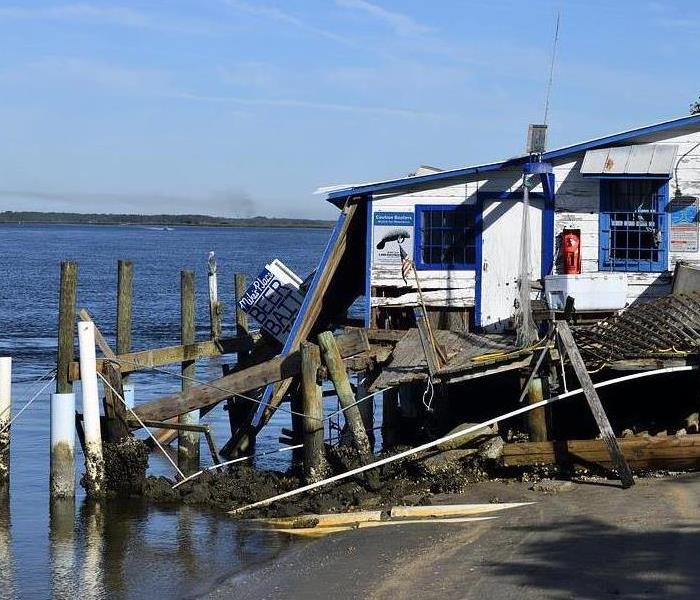 A house destroyed by a hurricane.
A house destroyed by a hurricane.
Water damage can be deceptive. Water penetrates into structural cavities creating trapped pockets of saturation. The detection of water in these areas can often only be discovered with sophisticated moisture detection meters. Undetected moisture will continue to cause damage. This damage, at a minimum, will cause odors. Greater damage will surface when materials delaminate, shrink, split and further deteriorate to where costly repairs are required.
More than just removing excess water, IICRC-certified (Institute of Inspection Cleaning and Restoration Certification) restorers have the knowledge and equipment to further dry a home or facility (including substructure materials) completely back to preloss conditions. Through timely response and the careful monitoring of water damage, mold and other issues can be prevented. If water damage has been present too long, mold will occur.
All IICRC-certified professionals have the training and experience to identify moisture sources, evaluate mold growth (visible or suspected), contain damage, remove contamination and dry materials to ensure that mold will not return.
Every technician in SERVPRO of Hamilton and South Trenton is Certified through the IICRC, and experienced in their craft.
Why is my window AC unit leaking water inside my house?
6/3/2022 (Permalink)
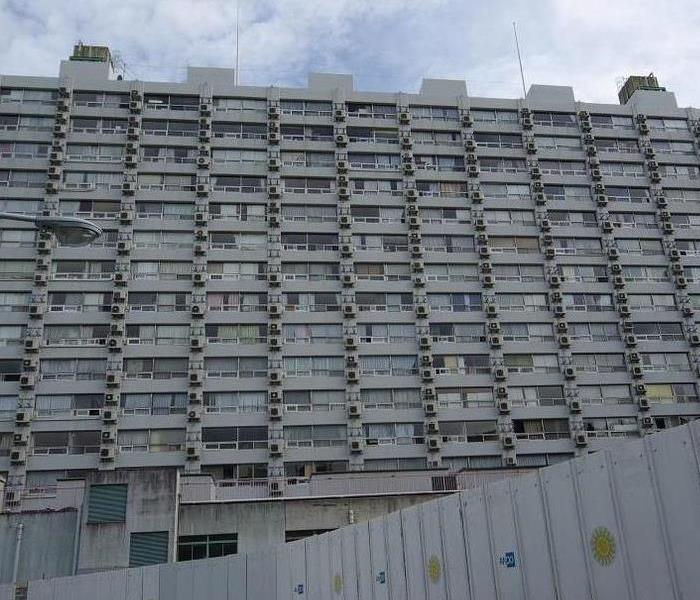 Building with multiple window AC units.
Building with multiple window AC units.
Question: I just turned my window AC unit on today and it is leaking water inside my house. What could be the problem? I had it running for 3 weeks and all of a sudden it started to leak. Water is on the plastic vent where the cold air blows out. I believe that is where it is leaking from but not sure. Can you tell me how to fix this?
ANSWER: You need to check a few things to be sure the ac unit is installed properly and there is no water drainage block present.
– Unplug the window AC unit.
– Clean up all the water on the AC unit, on the window ledge, and on the floor of your room.
– Check and be sure the AC is tightly sealed in the window.
– Do you feel warm air coming into the room around the AC unit?
– If you feel warm air coming in you need to seal it again.
– Check to see if the drain holes on the rear of the ac unit are blocked.
– Clean the drain holes to allow water to drip out.
– Make sure the filter is clean and not clogged with massive dirt or dust.
– After cleaning up the water and having it turned off for 30 minutes or so, then turn it back on to make sure the water doesn’t appear again.
Here are the reasons water can drip from a window air conditioner unit:
AIR LEAK – AIR CONDITIONER NOT PROPERLY SEALED IN WINDOW:
If your window air conditioner is not sealed correctly, the warmer air from outside gets inside the air conditioner. When this happens, the moisture that is in the warmer air will be condensed by the colder air inside the air conditioner. When there is excess moisture, the water will leak.
DRAIN IS BLOCKED – DIRT OR DUST HAS BLOCKED THE DRAIN HOLES:
There are drain holes (drip pan) at the rear of window AC units. They can get blocked from dusty conditions or dirt in the air. When this type of blockage happens, the water that would normally drip out will be trapped and water will leak from the front of the AC unit and at both sides of the unit. Be sure to keep the drain holes clean and free of debris. Also clean the filters or replace them to prevent any type of blockage that may cause a water leak.
OUTSIDE TEMP IS LOWER – HEAVY MOISTURE IN OUTSIDE AIR:
If it is raining or there is heavy moisture in the air outside, water evaporates much less than usual. This leads to excess water moisture in the air conditioner and this will cause water leaks. This is normal for most window AC units and using a drip pan can solve the issue if there is heavy moisture in the air outside.
CONDENSER PUMP NOT WORKING – BROKEN OR CLOGGED PUMP:
If the condenser pump in the AC is faulty or clogged, it will cause water to leak. You can check the condenser/pump if you feel confident. Check for any blockage or loose wires. If the pump seems to be okay visually, you will need to test the pump with a meter to see if it is faulty. If so, you may be better off buying a new AC unit.
If your home has experienced any water damage, the team at SERVPRO® is always available to help with cleanup and restoration, making it look “Like it never even happened.” Contact us at 908.650.8611.
Taking Water Damage Into Consideration | SERVPRO® of Hamilton, South Trenton
10/11/2021 (Permalink)
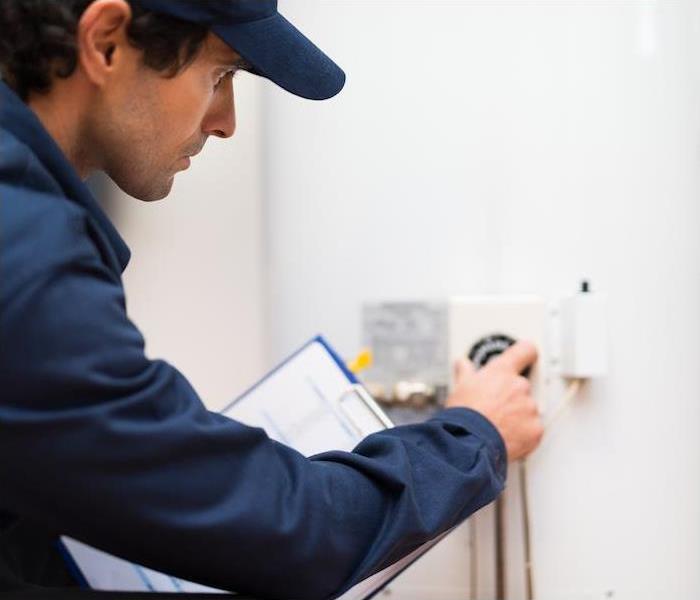 Water damage can happen at any time. SERVPRO of Hamilton, South Trenton will ensure that each water mitigation job is done correctly and completely.
Water damage can happen at any time. SERVPRO of Hamilton, South Trenton will ensure that each water mitigation job is done correctly and completely.
Water. Let’s face it—we need it to live—everything needs it! But what we don’t need is for it to be causing damage to our property and our homes.
When it comes to damage caused by water, there are many reasons it happens. How many of those reasons are you aware of?
Common CausesThe most prevalent reasons for a filed homeowners insurance claim are:
- Wind damage
- Water damage from sources other than weather
- Hail
- Weather-related water damage
- Burglary
Water damage is so common that it appears on this list twice, in two different categories. To make it simple, remember that it can be classified as non-weather-related and weather-related.
Water damage that is not caused by weather occurs most often in the home and is the result of plumbing and appliance malfunction issues. Water damage caused by weather can cause just as big of headache but does not occur as often. Weather-related water damage is caused by events such as rain, snow or melting ice.
The top five reasons for water damage in the home are plumbing, appliance leaks, water pipe issues, older water heaters and weather.
Water Damage PreventionWhile water damage can be pricey, it could be even more pricey if a homeowner is not covered by homeowners insurance. Check your homeowner policy for your coverages. In most cases, damages that are covered in a standard policy are:
- Damages caused by winter weather
- The expulsion of water, even if it is accidental
- Damaged or broken down hot water heating system
- Plumbing that freezes
Fortunately, there are ways to keep water damage from occurring, thereby saving yourself some headaches in the future.
Here are some ideas for preventive maintenance to help you protect your home as much as possible from the damage caused by water:
- Hire a plumber to install back flow valves and standpipes in basement drains.
- Raise your appliances and personal items up off the basement floor.
- Clean all gutters and downspouts.
- Never place grease down the kitchen drain.
When you follow these suggested tips, you just might reduce the probability for any water damage incidents in your home.
Water damage can be a nightmare to deal with but fortunately, you will always have SERVPRO® of Hamilton, South Trenton on your side to help with the cleanup and restoration process.
Taking Water damage Into Consideration | SERVPRO® of Hamilton & South Trenton
7/9/2021 (Permalink)
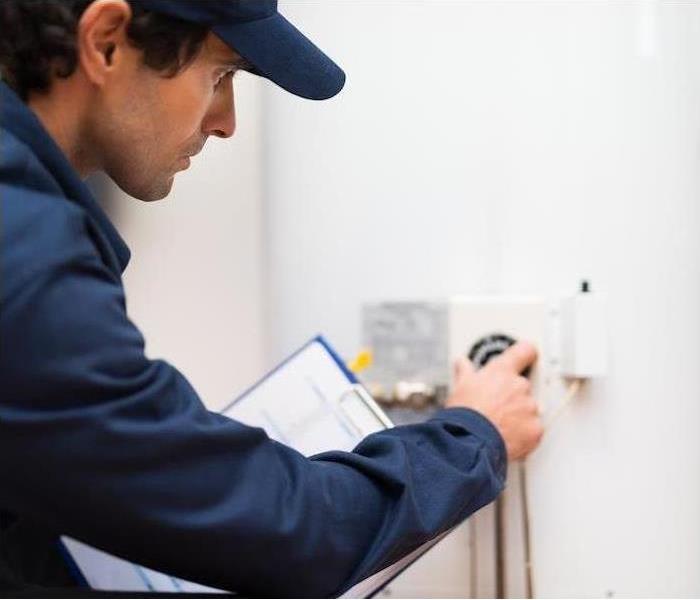 Water damage can be a nightmare to deal with but fortunately, you will always have us.
Water damage can be a nightmare to deal with but fortunately, you will always have us.
Water. Let’s face it—we need it to live—everything needs it! But what we don’t need is for it to be causing damage to our property and our homes.
When it comes to damage caused by water, there are many reasons it happens. How many of those reasons are you aware of?
For the period covering 2009 to 2015, The Travelers Companies Inc. discovered the most prevalent reasons for a filed homeowners insurance claim were:
- Wind damage
- Water damage from sources other than weather
- Hail
- Weather-related water damage
- Burglary
Water damage is so common that it appears on this list twice, in two different categories. To make it simple, remember that it can be classified as non-weather-related and weather-related.
Water damage that is not caused by weather occurs most often in the home and is the result of plumbing and appliance malfunction issues. Water damage caused by weather can cause just as big of headache but does not occur as often. Weather-related water damage is caused by events such as rain, snow or melting ice.
The top five reasons for water damage in the home are plumbing, appliance leaks, water pipe issues, older water heaters and weather.
Water Damage Prevention
While water damage can be pricey, it could be even more pricey if a homeowner is not covered by homeowners insurance. Check your homeowner policy for your coverages. In most cases, damages that are covered in a standard policy are:
- Damages caused by winter weather
- The expulsion of water, even if it is accidental
- Damaged or broken down hot water heating system
- Plumbing that freezes
Fortunately, there are ways to keep water damage from occurring, thereby saving yourself some headaches in the future.
Here are some ideas for preventive maintenance to help you protect your home as much as possible from the damage caused by water:
- Hire a plumber to install back flow valves and standpipes in basement drains.
- Raise your appliances and personal items up off the basement floor.
- Clean all gutters and downspouts.
- Never place grease down the kitchen drain.
When you follow these suggested tips, you just might reduce the probability for any water damage incidents in your home.
Water damage can be a nightmare to deal with but fortunately, you will always have SERVPRO® of Hamilton & South Trenton on your side to help with the cleanup and restoration process.
A Look at Common Causes of Water Damage in Your Home
7/9/2021 (Permalink)
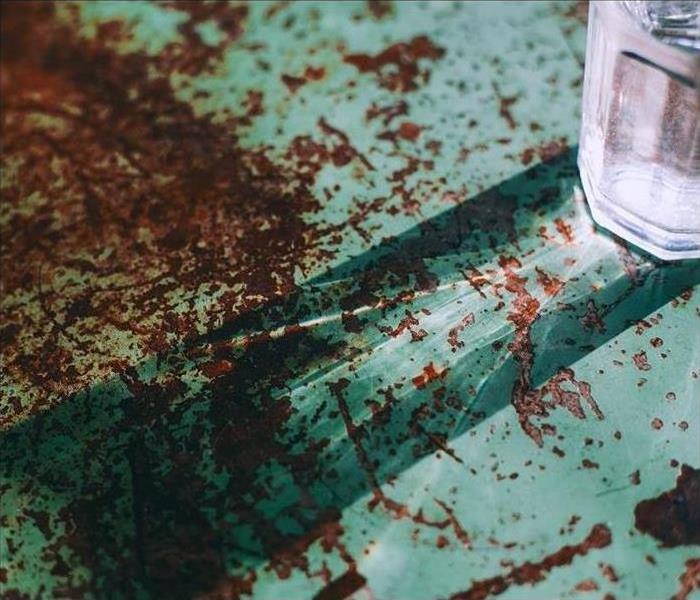 Water damage can happen at any time. We will ensure that each water mitigation job is done correctly and completely.
Water damage can happen at any time. We will ensure that each water mitigation job is done correctly and completely.
Severe weather is usually one of the first things that comes to mind for many when thinking of water damage. It’s true that storms and flooding can cause catastrophic water damage, but they are often not the main culprits. Various items in your home can be the culprits responsible for many water damage situations.
Understanding Water Damage
Many homeowners will face water damage. Water damage was the third most common reason for homeowners insurance claims between 2011 and 2015, with an average payout per claim of $8,861.
Insurance claims are impacted by the type of water damage. Gradual damage, for example, is often not covered by insurance. Gradual damage is something that has been happening over time, such as plumbing issues in the walls causing damage to the walls, ceilings or floors, or water damage caused by cracks in the foundation. Unfortunately, many aspects of gradual water damage are not covered by homeowners insurance, while storm-related water damage usually is.
Common Water Damage Culprits
The Insurance Institute for Business & Home Safety (IBHS), lists the leading causes of water damage as outlined below:
Plumbing drain system failures. These can occur when a sewer drain backs up and overflows into a home or from material performance issues. In their study, IBHS determined that 52% of drain system failures were caused by sewer backups and 37% were related to material performance issues. It was also discovered that the average costs incurred due to drain system failure were higher in southern states than in other areas of the country.
Plumbing supply system failures. Frozen pipes can burst due to water pressure buildup caused by freezing water or when the supply system material fails and results in a leaking or burst pipe. Per IBHS, plumbing supply system failures are the leading source of residential water losses, costing an average of $5,092 per claim after the deductible. Homes with ages of 16 to 40 years made up a larger group of supply system material failure claims.
Toilet failures. Toilets are the second highest cause of residential water damage loss after plumbing supply system failures and result from faulty fill valves to clogged drain lines. Surprisingly, according to IBHS, toilet failures on the first floor of a home resulted in more extensive claims than those in basements or upper floors.
Water heater failures. If your water heater has reached its life expectancy, expect that the tank will begin to rust and corrode, resulting in leaking or bursting issues. IBHS found that 69% of all water heater failures were a result of a slow leak or sudden burst and, on average, cost $4,444 per incident after the deductible has been paid.
Washing machine failures. Typically washing machine failures are caused by supply hose failures, machine overflows and drain line failures. Washing machines are one of the top 10 sources of residential water damage losses. Per IBHS, supply hose failures accounted for over half of all washing machine-related losses.
If your home has experienced any water damage, the team at SERVPRO® of Hamilton & South Trenton is always available to help with cleanup and restoration, making it look “Like it never even happened.”
Getting to Know the 3 Types of Water Classifications | SERVPRO® of Hamilton & South Trenton
7/9/2021 (Permalink)
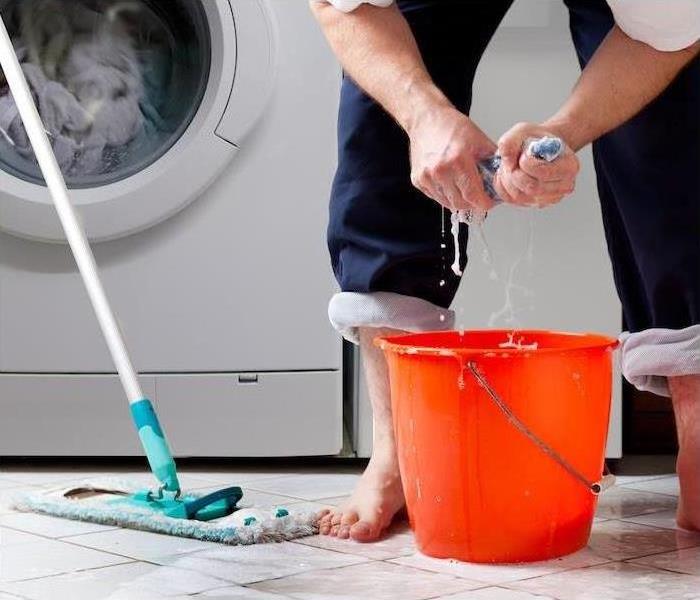 We are available for cleanup and restoration services 24 hours a day, seven days a week.
We are available for cleanup and restoration services 24 hours a day, seven days a week.
If you think all water that causes water damage is the same, think again! There are three classifications for it: clean, gray and black.
By gaining a better understanding of the differences in these types of water, it will help you understand how to better handle a water damage situation.
Whenever there is a water damage situation, it doesn’t matter what type of water has caused damage because a cleanup and restoration process will always follow. First, and most important, is removing all moisture and damp items as quickly as possible to hinder the growth of mold, which begins to flourish in this ideal environment.
Clean Water
The name says it all; clean water is considered “clean” and not likely to be the type that would pose an immediate threat to your health. This water contains no contaminants and is the result of:
- Broken water lines
- Malfunctioning appliances
- Toilet holding tanks
- Snow melt and rainwater
Clean water is the easiest type of water damage to work with because there are fewer microbes living in the water. But remember, it only takes 48 hours and contact with the surfaces of a building for clean water to become a category two, becoming gray water.
Gray Water
Damage from gray water makes water damage cleanup and restoration a bit more serious. This is water that may pose a health risk because it will most likely contain chemical or biological contamination. This slight contamination means that gray water would need to be thoroughly treated before it is safe for consumption.
Water that comes from dishwashers, aquariums, showers, etc. is considered gray water, and the 48-hour exposure time applies here as well, as it will become black water if it is not quickly and property treated.
Black Water
A black water damage situation is considered the most serious of the three classifications as this water is highly contaminated by harmful chemicals and biological matter. This would include floodwaters containing soil and all sewage waters.
Sewage is contaminated with microbes, which include bacteria, protozoans, molds, fungi and more—many of these can cause health effects to humans.
Some of the diseases that can be transmitted by black water are:
- Cholera
- Typhoid
- Hepatitis
- Gastroenteritis-type illnesses
Any water involved in a flooding situation should be considered dangerous and assumed to be black water since it will pick up contaminants along its path.
The Institute of Inspection, Cleaning and Remediation Certification (IICRC), an organization that certifies and sets the standards for the cleaning and restoration industry, recognizes these three classifications of floodwater. Our highly trained technicians have all studied IICRC’s standards and best practices in water restoration and are available to help determine the steps to take to get your home back to normal.
It doesn’t matter what type of water has caused damage to your home or business, we are here to help get the situation under control and make it "Like it never even happened." Don’t hesitate to reach out to us if you need emergency cleanup and restoration services!
Window Air Conditioner Leaking Water Into House – What To Check – How To Fix
6/14/2021 (Permalink)
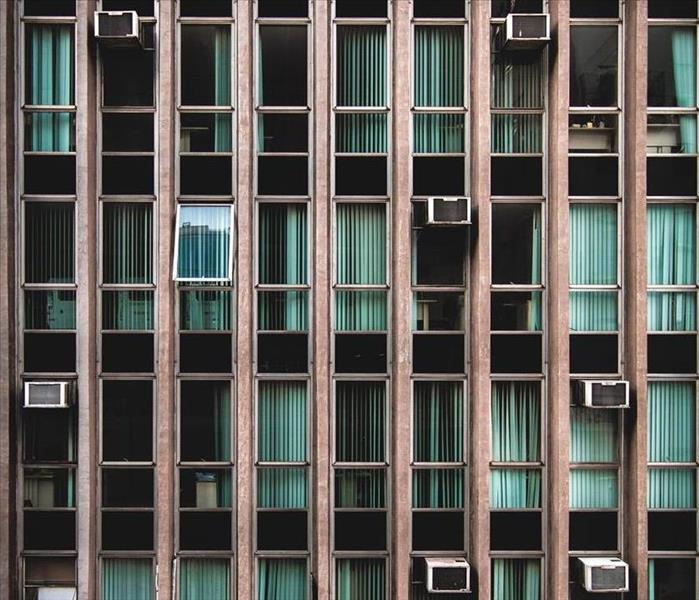 If your home has experienced any water damage, the team at SERVPRO® is always available to help with cleanup and restoration.
If your home has experienced any water damage, the team at SERVPRO® is always available to help with cleanup and restoration.
Question: I just turned my window AC unit on today and it is leaking water inside my house. What could be the problem? I had it running for 3 weeks and all of a sudden it started to leak. Water is on the plastic vent where the cold air blows out. I believe that is where it is leaking from but not sure. Can you tell me how to fix this?
ANSWER: You need to check a few things to be sure the ac unit is installed properly and there is no water drainage block present.
– Unplug the window AC unit.
– Clean up all the water on the AC unit, on the window ledge, and on the floor of your room.
– Check and be sure the AC is tightly sealed in the window.
– Do you feel warm air coming into the room around the AC unit?
– If you feel warm air coming in you need to seal it again.
– Check to see if the drain holes on the rear of the ac unit are blocked.
– Clean the drain holes to allow water to drip out.
– Make sure the filter is clean and not clogged with massive dirt or dust.
– After cleaning up the water and having it turned off for 30 minutes or so, then turn it back on to make sure the water doesn’t appear again.
Here are the reasons water can drip from a window air conditioner unit:
AIR LEAK – AIR CONDITIONER NOT PROPERLY SEALED IN WINDOW:
If your window air conditioner is not sealed correctly, the warmer air from outside gets inside the air conditioner. When this happens, the moisture that is in the warmer air will be condensed by the colder air inside the air conditioner. When there is excess moisture, the water will leak.
DRAIN IS BLOCKED – DIRT OR DUST HAS BLOCKED THE DRAIN HOLES:
There are drain holes (drip pan) at the rear of window AC units. They can get blocked from dusty conditions or dirt in the air. When this type of blockage happens, the water that would normally drip out will be trapped and water will leak from the front of the AC unit and at both sides of the unit. Be sure to keep the drain holes clean and free of debris. Also clean the filters or replace them to prevent any type of blockage that may cause a water leak.
OUTSIDE TEMP IS LOWER – HEAVY MOISTURE IN OUTSIDE AIR:
If it is raining or there is heavy moisture in the air outside, water evaporates much less than usual. This leads to excess water moisture in the air conditioner and this will cause water leaks. This is normal for most window AC units and using a drip pan can solve the issue if there is heavy moisture in the air outside.
CONDENSER PUMP NOT WORKING – BROKEN OR CLOGGED PUMP:
If the condenser pump in the AC is faulty or clogged, it will cause water to leak. You can check the condenser/pump if you feel confident. Check for any blockage or loose wires. If the pump seems to be okay visually, you will need to test the pump with a meter to see if it is faulty. If so, you may be better off buying a new AC unit.
If your home has experienced any water damage, the team at SERVPRO® is always available to help with cleanup and restoration, making it look “Like it never even happened.” Contact us at 908.650.8611.
Ways You Can Prevent Mold Growth After Water Damage | SERVPRO® of Hamilton/South Trenton
6/3/2021 (Permalink)
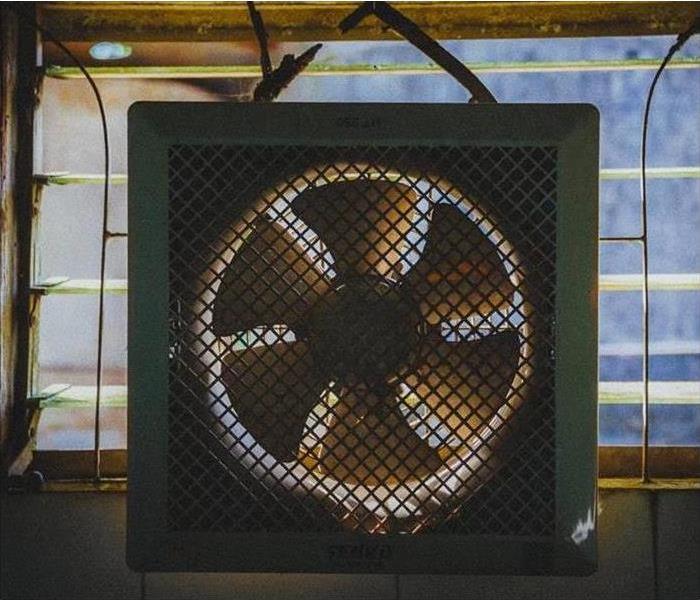 If you’re worried about cleanup associated with water damage and mold growth, we can help you restore your home and remediate any mold issues.
If you’re worried about cleanup associated with water damage and mold growth, we can help you restore your home and remediate any mold issues.
Water damage is difficult for home and business owners—not only because of the structural damage it can cause but also because of the unique health hazards and risks it can present.
One of the most dangerous of these risks is mold growth. The CDC has many health effects associated with mold exposure that are well-documented, and the problem is exacerbated because of how quickly mold can begin growing.
Here are the steps you can take to stop mold from taking hold if your home has been affected by water damage:
Before You Get Started
- Do not attempt to re-enter your building until officials have deemed it safe and are positive all water has receded.
- Take photos and videos of damage throughout—making sure to include damage done to furniture and walls—for insurance claim purposes.
Drying Should Begin Right Away
- Set up as many fans, dehumidifiers and heaters as possible to speed up drying time.
- Begin vacuuming with a heavy-duty, outdoor vacuum before the cleanup crew arrives.
- Weather permitting, open windows and doors to maximize airflow for as long as possible.
Items Exposed to Water Should Be Sorted
- Metal, plastic glass and other non-porous materials can often be cleaned, disinfected and reused.
- Porous materials exposed to water damage, such as wood, upholstery and paper of any kind, can trap mold and should be discarded.
- It is important to note that drying carpet will not necessarily remove mold spores if they’ve already begun to grow.
A Professional Should Always Be Consulted
In some cases, carpets can be salvaged after water damage. However, most experts will recommend replacing the carpet pad at a minimum.
Mold is incorrectly associated with discolorations and foul odors when the reality is that mold can often lurk unnoticed long before it is visible. Replacing the carpet pad is significantly less costly than a full re-carpeting of the home, but only a professional can determine if this is adequate enough to prevent mold from spreading.






 24/7 Emergency Service
24/7 Emergency Service


















